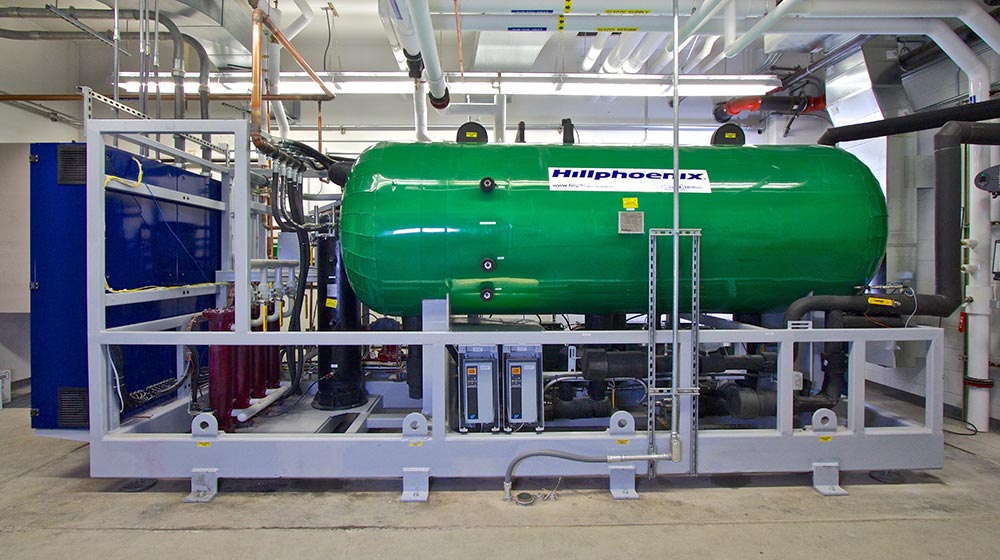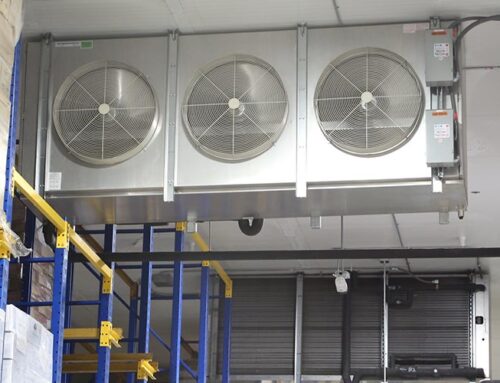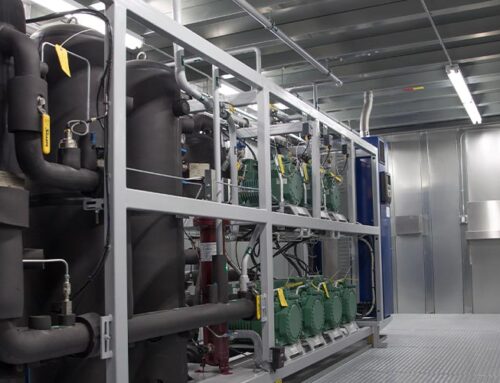What Equipment Is Used in a Typical Ice Rink Refrigeration System?

These steel pipes are typically embedded into a concrete slab and kept at 32° F / 0° C, so that any water placed on top of the slab freezes and becomes the skating surface that we see and use. A level of insulation is set beneath the concrete slab so that the ice can shrink and expand as needed.
Parallel Racks … Parallel rack compressor systems feature multiple compressors that all work together to suffice required refrigerated loads. This type of system is applied to many different industrial applications, including ice rink facilities.
Parallel rack refrigeration can be used with either direct or indirect ice rink systems.
Parallel systems or “racks” provide significant advantages over other refrigeration methods. Most notably among these are:
- Energy Efficiency —By using multiple compressors and computer optimization, the compressors cycle on and off to continuously match the exact cooling requirements and thereby do not waste energy by being forced to run only to maintain a working pressure.
- Compressor Redundancy — Through the use of multiple compressors, all working together to maintain the load, a degree of redundancy is inherently created. If one compressor fails, the additional compressors distribute the load which provides minimal deviation from design temperature.
- Flexibility– Systems are custom-designed to match the exact requirements of the intended application. Moreover, through flexibility of compressor staging and computer controls, future load additions or temperature changes can be easily accommodated.
- Advances in technology have made the use of environmentally friendly CO2 booster systems practical across a wide range of applications. A booster system is centralized and uses only one refrigerant — CO2. It does not have to rely on any HFC or ammonia refrigerants, as other parallel rack cascade systems do. In large part, this is made possible by the function of two main components that are not found on traditional types of systems — a high-pressure control valve and a flash-gas bypass valve. In tandem with a third component, the condenser/gas cooler, which works as a condenser like the ones on most other types of systems, CO2 booster systems have become a practical alternative to traditional systems for almost any type of application.Ice Rink Chillers … An Ice Rink Chiller works on the principle of heat transfer. In this process, heat is transferred from a lower temperature region (refrigerant) to a higher temperature region (rink surface ice) in the adjacent surrounding.The basic principle of Ice Rink Chiller is the same as other chilling systems. Refrigerant is used to absorb the heat of the process and phase transitions occur that re-circulate the fluid and cool down the temperature.Brine, which is a mixture of water and salt, is returned from the ice rink after absorbing heat. The heat is transferred to another secondary refrigerant such as ethylene glycol or carbon dioxide. The refrigerant absorbs heat from the brine and changes its transition state from liquid to low-pressure gas. The high-pressure gas then again reverts its transition state to liquid and re-circulates the pipeline of the Ice Rink Chiller.What Are the Typical Components of an Ice Rink Chiller?
- Screw compressor
- High-efficiency motor
- Built-in system redundancy
- Centrifugal motor pump
- Shell and tube cooler
- Automatic oil recovery system
- Glycol or brine
- Heat recovery system
- Digital control panels
Chillers can be used on either direct or indirect refrigeration systems with the main difference being that the indirect system utilizes two refrigerants (e.g. primary and secondary) for heat transfer.




